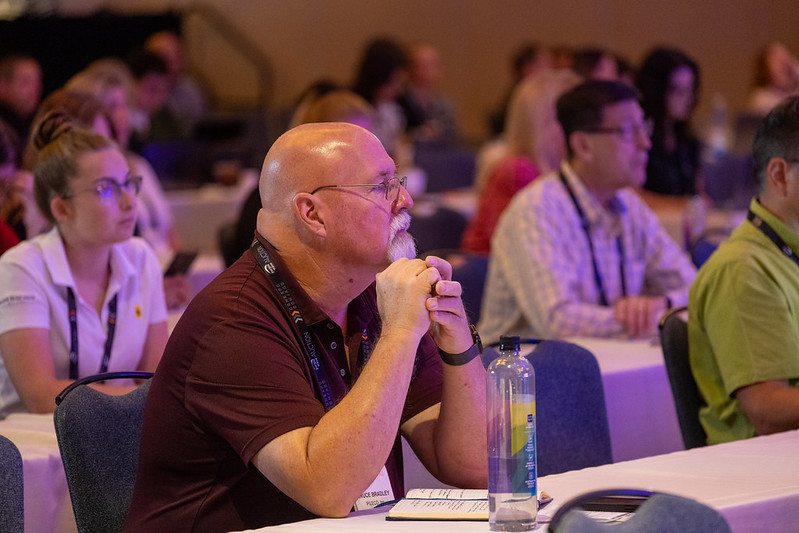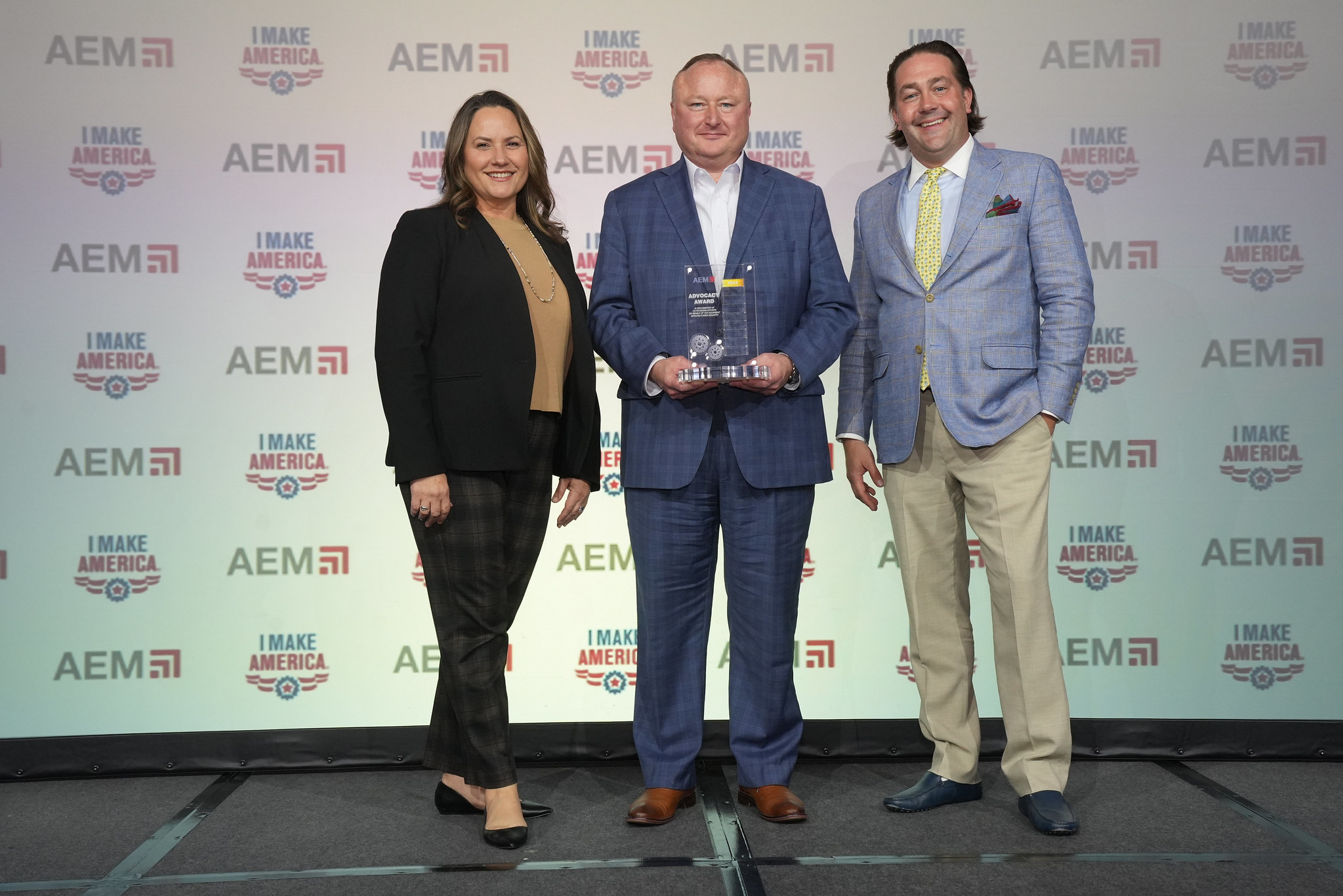By Julie Davis, AEM Senior Director of Workforce and Industry Initiatives, SHRM-CP —
I want to begin by acknowledging the progress that has been made addressing harassment and discrimination toward women over the past several decades. The survey feedback relayed in this article is not meant to be a reflection on the majority of professional males that women engage with on a daily basis. The majority of men that I have worked with over my entire career have mothers, sisters, wives and daughters, and their relationship with the women in their lives is often the foundation for the respectful relationships they establish and maintain. So, thank you to the many male colleagues who make workplaces safe and supportive for women. That being said, there’s still more work to be done.
The information I want to share with you today began when I was asked about how to better support women’s career development in our predominantly male-dominated industry sectors. Not wanting to base my response solely on my own lived experience, I conducted a survey that asked women to answer five questions:
- What was most impactful in helping grow your career?
- What is the largest element missing from any workplace that is crucial to supporting the advancement of women, and what solution would you suggest?
- What advice would you give to leaders and employers on how they can help women rise in their careers and/or in the industry?
- Do you believe you have experience discrimination or harassment in the workplace based on being a woman? If yes, did you take any action?
- Do you have any other advice?
To my surprise, even though the survey averaged 50 minutes to complete, women thanked me for asking and provided answers that were filled with authenticity, honesty and insight. I shared the answers from the first three questions in a previously published article on supporting women in the workplace. However, I felt the survey responses from the question about discrimination and harassment deserved individual attention and examination.
Having tools to know how to diffuse a situation while maintaining and setting boundaries within the customer relationship in a friendly yet forthright way, instead of having to figure it out on my own (and feeling very alone) would have been incredibly helpful.
The only personally identifying information that I asked for in this survey was a participant’s age by decade. I had hoped to see an indication of change over the decades in response to the question of discrimination and harassment. I think the stories and examples do show that change has happened. However, women in their twenties still gave personal stories of experiences they felt reflected discrimination or harassment based on their gender.
So, with all that being said, here is what they shared:
4: Do you believe you have experienced discrimination or harassment in any workplace based on being a woman? If yes, did you take action?
- My first internship, and my first job out of college. No action was taken. Both managers were men and had big egos. One of them said he valued a female perspective, and whenever it was offered, he dismissed it, and was pretty condescending about it in the process.
The women who indicated they were in their thirties often responded with examples of how they experienced challenges, but also offered a very real sense of working to stand up for themselves.
- Inspectors refusing to talk to me until a “man was onsite.” Employees stealing photos off my desk and using them for fun in port-o-John’s. “Pats” on the butt, rules to check in with male coworkers during conferences for my safety, being accused of only getting to where I am because I must have slept with someone. There were never formal corrections. In response, I've removed people from jobsites, I've withheld progress payments, I've asked for written statements from management. I was once told that the only reason I was promoted was because of DE&I initiatives ("they promoted the girl, not the best person for the job"). I told that person to leave my office and shut the door on his way out. :) I love my job, but it’s truly amazing what I put up with to get here.
Women in their forties had definitely experienced challenges and there was somewhat of a road-warrior mentality that came through in their responses.
- Yes, it is hard to work in a male-dominated industry and not be treated as less capable or less able sometimes. There isn't a lot of action you can take when it comes to certain personality types and it is a "hazard of the job" in some industries until the workforce continues to get younger and some entrenched belief systems die off into retirement.
- Unintentional bias. Sexual advances. Flirtatiousness that was labeled as “just being friendly.” Labeled “b----” for asserting myself.
- Yes, for sure. It is hard to say if it was intentionally malicious, or just stupidity and old-school mentality. I did not take action, but it impacted my decisions and choices and I moved on from that environment shortly after. Funny that now some of their top executives come to me for coaching and consulting.
And for women over fifty, nearly all of them had experienced discrimination and harassment.
- Of course, I have. Every woman has, be it subtle or extreme. I address those situations by showing I can do my job and do it well. There's no point in taking any type of action with HR. Unless it's sexual harassment, I think I can take care of these things on my own.
- In fact, the Vice President explained to me the reason I could not receive a raise commensurate with the promotion I was receiving was because a woman (me) could not make a salary higher than a man (one of my direct reports) in my department. I was not expected to take any action; I was expected to be thrilled with the promotion to Assistant Vice President with a lesser salary than the men (and women) I was to oversee. (I no longer work for that organization.)
- There were many inappropriate comments early on in my career, but I didn't let that distract me. The world of work has changed a lot over the years, and I think discrimination and harassment are far less prevalent.
Regardless of age group, there was one very consistent theme throughout all the stories that were shared. If discrimination or harassment happened, the vast majority of women kept it to themselves. Of the 55 respondents to the survey, 75% indicated they experienced some type of harassment or discrimination. Only five respondents took action and reported what had happened. Of those five women who reported their situation, two reported being fired as a result, two said there was no action taken to support them and only one woman said she had a successful resolution. Many women who did not take action said that it would have put their career at risk, or it would have been unsafe for them to do so.
As a woman, reporting that is jarring. If we want to welcome women into our industry sectors, promote women and encourage our daughters to join the industry, we must become observant listeners. We need to be practicing bystander intervention if we see or hear harassment or discrimination taking place. We also need to be supportive of one another. There were several women who responded that looking back, they saw situations for what they were but at the time, they were just too naive to fully understand what was happening.
There was one woman’s statement that really resonated with my own lived experience:
- From my perspective, it is unfair and unrealistic to pretend bias and harassment doesn't exist anymore. Not preparing women to deal with it effectively in the manufacturing workplace will cause women to leave, thinking that it may somehow be different or better elsewhere. And it's especially tricky when it happens with a customer- I know my manager would have always supported me if it caused a loss of sales, but it's still difficult when a multi-million dollar account is at stake. So, having tools to know how to diffuse a situation while maintaining and setting boundaries within the customer relationship in a friendly yet forthright way, instead of having to figure it out on my own (and feeling very alone) would have been incredibly helpful.
Would we ever consider proactively preparing women to be ready and equipped to deal with harassment? I can think of several key moments in my past where I found myself in an awkward and uncomfortable situation, one where I didn’t know how to respond to but certainly needed to figure it out fast. After navigating through a high-level sales conversation where I was able to keep both the sale and my dignity intact, I remember thinking to myself that no one had bothered to let me know I’d have to develop a skillset like that. Why don’t we better prepare women to identify and navigate those critical business situations? Why don’t we empower women with the skills and knowledge they need to feel comfortable and safe when we are inviting them into the industry? I have some guesses about the uncomfortable answers to those questions, but I think asking the questions is critically important.
It is unfair and unrealistic to pretend bias and harassment doesn't exist anymore. Not preparing women to deal with it effectively in the manufacturing workplace will cause women to leave, thinking that it may somehow be different or better elsewhere.
5. Do you have any other comments on this subject that you would like considered?
I believe that when answering these very open-ended questions, several respondents offered words of wisdom that completely sum up what organizations can do to advance women’s career development.
- Get to know your employees and the current workplace culture for women. Ask questions, survey, observe, etc. Then provide opportunities or make changes based on the feedback.
- Put women in the room. Always.
- Invest your time into rising women. Taking the extra few minutes to make a personal connection, praise someone for their work, ask about their personal life, etc, goes a lot further than people realize.
- Have clear and fair standards for advancement, pay, professionalism and disciplinary actions. Talk to your staff, don't overlook skills or experience they had prior to their current role.
- Reach out and help pull the women along. Not dismissing the need for hard work and talent (that’s a given), but no one is successful without advocates and people helping to pull them along.
- Communicate with us to discuss our career plans and goals and then provide women with opportunities to learn and grow into some of those goals at our present place of employment.
- Actively invest in making the workplace easier for women to navigate through flexible options and a positive, collaborative environment. Make a point to have a series of significant 1-on-1 conversations about their aspirations. Make sure those conversations yield follow up, so women can see and understand it's not just lip service, but it's "real." That also sends a message that they matter and are important to the company.
Women comprise 47% of this country’s workforce. Their perspective can bring balance and shed insight to organizational decision-making, resulting in a better bottom line. Their skills can help close the skills gap that currently exists and is only getting wider. However, manufacturing has yet to leverage the working power that women have to offer. I hope that the voices of the women who offered their perspective, life experiences and wisdom to inform this audience helped each of us think about the challenges that we have overcome as an industry, a business and within our cultures, as well as consider the ones we have yet to overcome.
Ultimately, the end goal for employers should be to create, develop and maintain an environment where our sisters, daughters, mothers and wives feel comfortable working. The only question that remains then is, what are we willing to do to achieve that goal?
Subscribe to the AEM Industry Advisor for more AEM staff perspectives.





